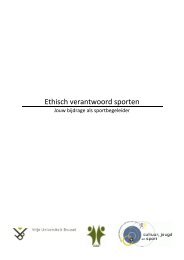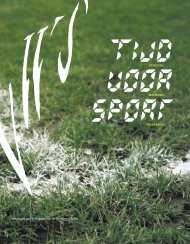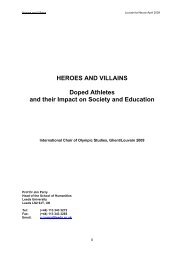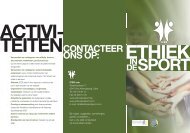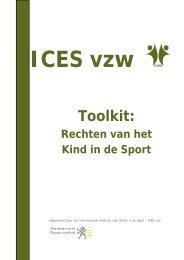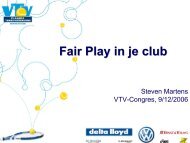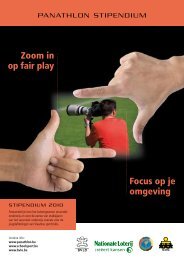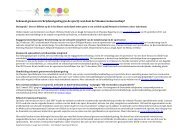Part 3 GLOBAL ISSUES: HARASSMENT AND ABUSE RESEARCH
Part 3 GLOBAL ISSUES: HARASSMENT AND ABUSE RESEARCH
Part 3 GLOBAL ISSUES: HARASSMENT AND ABUSE RESEARCH
Create successful ePaper yourself
Turn your PDF publications into a flip-book with our unique Google optimized e-Paper software.
staff or volunteers who were not as senior in the competitive sport hierarchy<br />
as the perpetrator. This was especially notable in the elite sport context<br />
(“’cause we were so elite and no one ever questioned what we were doing.”).<br />
Non-intervention by other adults in a young person’s environment is likely to<br />
be interpreted as meaning that those adults are also powerless in relation to<br />
the perpetrator.<br />
For children, disclosure may be preempted if the child believes, or is<br />
aware that other adults know about the abuse. 15 If observing adults take no<br />
action, the child may assume that the behaviour is socially acceptable, or in<br />
the case of older children, as mentioned above, that perpetrator’s message<br />
that he is omnipotent is really true and that therefore they really are trapped.<br />
16<br />
Reflections<br />
<strong>Part</strong>icularly evident from the data in this study was the manner in which<br />
certain aspects of the culture of competitive sport provide an environment<br />
which facilitates, rather than inhibits, the sexually abusive strategies used by<br />
people in positions of authority and trust. One of the more urgent implications<br />
arising from this study is the need to eliminate apparently-accepted,<br />
psychologically abusive coaching styles. Psychological abuse was clearly,<br />
and uniquely implicated in long-term negative traumatic outcome in the group<br />
of athletes who participated in this study, even where no sexual abuse had<br />
occurred. It also effectively masks sexual offender behaviours which rely on<br />
psychological abuse and emotional manipulation as primary strategies.<br />
To overcome the bystander effect, comprehensive and ongoing sexual<br />
abuse awareness education is imperative for all those involved in organised<br />
sport in Australia, including athletes, parents and all associated support<br />
personnel. <strong>Part</strong>icularly, it is the responsibility of adults in the system to ensure<br />
children’s safety. This responsibility should not be relegated to the children<br />
themselves. We need to understand that silencing is an integral, not separate<br />
part of the sexual abuse experience. Non-disclosure is the norm. Every<br />
person in the athletes’ entourage has a right to be informed and specifically<br />
empowered to act to safeguard athletes’ welfare through clear guidelines and<br />
procedures.<br />
29



